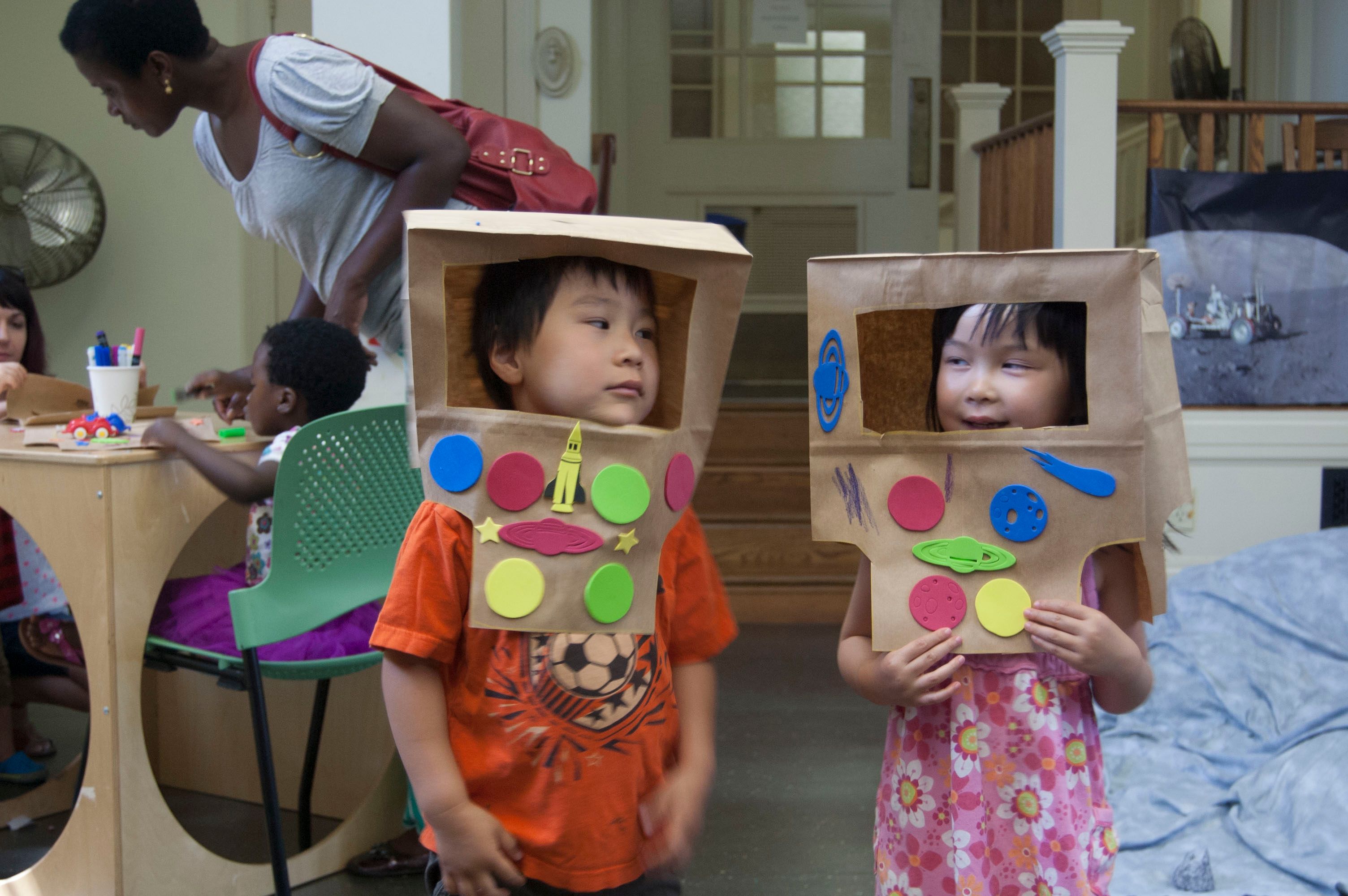Activities and Resources
The My Sky Tonight team has created a set of fun, science-rich astronomy activities for pre-K children, as well as supporting resources for educators on how to effectively work with young children and engage them in science practices.
Read more about 2020 recognition by National Science Foundation as top virtual learning program for Pre-K STEM.
Activities from My Sky Tonight
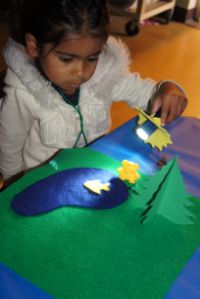
Bear’s Shadow
Children listen to the story Moonbear’s Shadow and then recreate scenes from the picture book, using a bear figure and a flashlight (to represent the Sun.) Children explore how the position of the light affects the size, shape, and position of the shadow.
Moon Phases Matching
Children match pictures of the Moon on cards with matching pictures on a banner that shows the Moon phase cycle. They notice patterns, talk about their observations, ask questions, and share past experiences of looking at the Moon.
Hide & Seek Moon
Children use binoculars to search for small items that an astronaut lost while walking on the Moon. The Moon is pictured on a banner hanging a short distance away.
Lunar Landscape
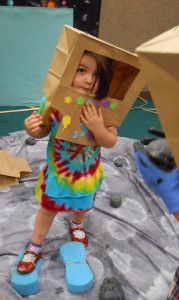
Children create their own space helmets out of paper bags, put on special air packs, gloves, and boots, and then explore the lunar landscape (created with a sheet, pillows, and pretend “moon rocks.”)
Creating Craters
Children make craters by dropping balls into a tub of flour. They observe the properties of balls with different sizes and weights, make predictions, compare craters created by different balls, and compare the flour craters to images of real craters on the surface of the Moon.
Build a Space Explorer
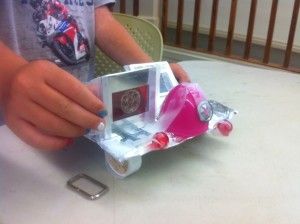
Children design and build a vehicle for exploring another world, using recycled materials. As they build, they are invited to describe the worlds their explorers will visit and the special tools they included in their designs.
Exploring New Worlds
Children work together in a group to create an Earth landscape, compare different environments on Earth, and talk about what makes Earth special (e.g., it’s a good place for life!) Then they prepare for an imaginary trip to Mars, make observations to learn about the planet, and create their own models of the Martian landscape. As a group, they compare Earth and Mars, talking about how they are similar and different.
Sun’s Energy
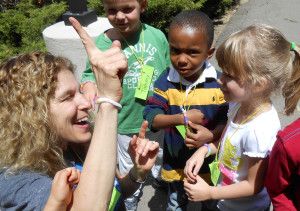
Children tell a story about a trip to the beach on a sunny day and investigate ultraviolet (UV) light by using UV-sensitive beads as a tool to detect UV light outdoors.
Day & Night
Children talk about the differences between daytime and nighttime, including the activities they do at each time. Then they model the Earth’s rotation with a globe and with their own bodies, to explore the reason for day and night.
Star Songs
Children love to sing! These two songs are fun, easy to sing, and scientifically accurate! The Star Song is about the properties of stars: size, color, temperature. The Constellation Song is about how the sky is organized into groups of stars called constellations.
Other Resources from My Sky Tonight
Scientists Not Sponges
In this 11-minute video, explore metaphors for learning, how these metaphors influence our interactions with young children, and what research in developmental psychology supports or refutes these ideas.
Science Practices for Young Children in Astronomy
We offer a 3-page guide as well as a 13-minute video that outline methods for engaging young children in the practices of science, with a focus on astronomy. Science practices include looking for patterns, making predictions, asking questions, recording observations, and developing claims.
Developmentally Appropriate Strategies for Interacting with Young Children
We offer a 4-page guide as well as an 8-minute video that outline key aspects of young children’s learning and introduces several developmentally appropriate teaching strategies, their basis in research, and their application to young children’s astronomy engagement.
Publications
My Sky Tonight: Inspiring and Engaging Activities for 3- to 5-year-old Audiences, in the December 2016 issue of Planetarian
Preparing for the Eclipse: How to Safely Observe the Sun with Young Children, in the March 2017 issue of Science & Children
Observing the Total Solar Eclipse with Early Learners, in the May 2017 issue of AstroBeat

